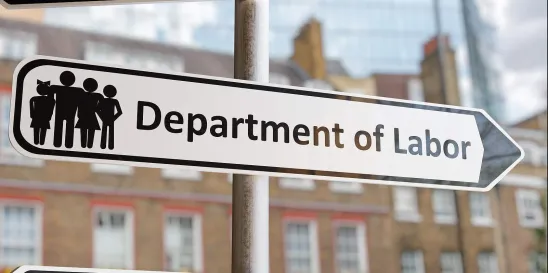The U.S. Department of Labor (DOL) unveiled its semi-annual regulatory agenda on December 6, 2023, which sets an April 2024 date for release of the agency’s anticipated final rule amending the regulations defining the “white collar” exemptions from the overtime and minimum wage requirements of the Fair Labor Standards Act (FLSA).
The DOL released its proposed rule Defining and Delimiting the Exemptions for Executive, Administrative, Professional Outside Sales and Computer Employees on September 8, 2023. As proposed, the rule sharply increases the minimum salary requirements for the executive, administrative, and professional (EAP) exemptions to apply. The salary threshold would increase from the current $684 per week ($35,568 per year) to $1,059 per week ($55,068 per year)—a 55% increase from the current level. The minimum salary for application of the highly compensated employee (HCE) exemption would jump by 34%, from $107,432 per year to $143,988 per year. However, the DOL has indicated the actual salary threshold will be based on earnings data as of the date the final rule takes effect — which means the salary floor may be even higher than the projected $55,068. That could lift the operative threshold to more than $60,000 annually. (For more on the proposed rule, see DOL Releases Proposed White-Collar Exemption Rule, Sets Minimum Salary at $55,068.)
Whether the DOL will meet its April 2024 target date remains to be seen. The agency will have to review more than 33,000 comments received in response to its notice of proposed rulemaking, and to address substantive comments in the final rulemaking. It’s also uncertain how closely the final rule will conform to the rule as proposed, and when the final rule, once published, will take effect. The DOL’s proposed rule did state the rule would become effective 60 days after publication of a final rule (the minimum timeframe mandated for “major” rules under the Congressional Review Act). The DOL specifically sought comments on the proposed effective date and on whether to apply different effective dates to different provisions of the proposed rule. (Past rulemaking is not a useful predictor: the DOL’s Obama-era white-collar rule revision took effect more than 6 months after the final rule was issued; the Trump DOL’s final rule took effect 3 months after publication.)
Complicating matters further for employers as they seek to evaluate their options for compliance with the rule change is the possibility of a legal challenge (and possible injunctive relief barring enforcement pending the challenge).
Independent Contractor Rule
The other significant rulemaking in the formal agenda by the DOL’s Wage and Hour Division is the “Employee or Independent Contractor Classification Under the Fair Labor Standards Act,” which is in the final rule stage. The DOL had indicated that its independent contractor final rule would be published in October 2023 (five months later than it had previously asserted), but the agency failed to meet this deadline. On September 28, 2023, the final rule was sent to the White House Office of Information and Regulatory Affairs (OIRA), the final stage of the rule review process.
A notice of proposed rulemaking for the new Independent Contractor rule was issued in October 2022. The proposed rule would formally adopt the “economic realities” test for determining whether a worker is an employee or independent contractor under the FLSA. (For a full discussion of the NPRM and the history of the independent contractor analysis under the FLSA, see our article, What’s Old is New Again: Labor Department Flip-Flops on Independent Contractor Analysis.)
Joint Employer Rule
Absent from the DOL’s semi-annual agenda is reference to a joint employer rule. Talk of whether the DOL would engage in such rulemaking has resurfaced, particularly in light of the final rule issued by the National Labor Relations Board in October 2023 (and now set to take effect February 26, 2024). However, DOL leadership has indicated such a rule is not currently in the works, and the latest rulemaking agenda confirms there is no agency action at this time.
House Republicans are seeking assurances, however. In a December 7 letter, Rep. Virginia Foxx, House Education and the Workforce Committee Chair, asked Acting Secretary of Labor Julie A. Su to commit that the DOL will not issue a joint employer rule during Su’s tenure at the agency. Foxx was troubled by Su’s failure to expressly rule out a joint employer rule when she spoke at a Congressional hearing last June.
DOL joint employer rulemaking has been in limbo since July 2021, when the agency rescinded an employer-friendly final rule on “Joint Employer Status Under the Fair Labor Standards Act” issued during the final year of the Trump administration. In its formal rule rescinding the Trump-era joint employer rule, the agency did not propose a replacement rule, instead stating that “the Department will continue to consider legal and policy issues relating to FLSA joint employment before determining whether alternative regulatory or subregulatory guidance is appropriate.”





 />i
/>i
